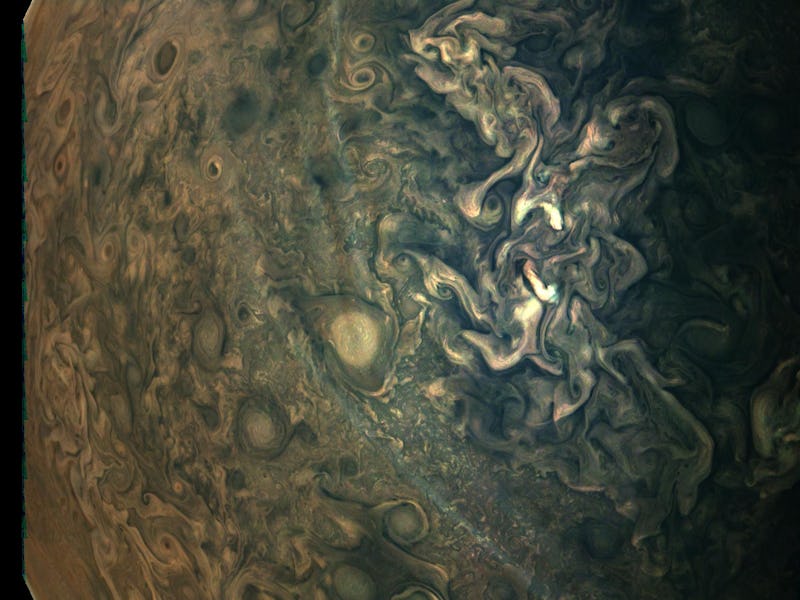New Jupiter image looks more like a Monet painting than a planet
The planet’s hazy swirls are quite dreamy.

The latest images of the planet Jupiter’s hazy atmospheric clouds look more like one of Claude Monet’s landscape oil paintings than the tumultuous, stormy gaseous world it truly is.
NASA’s Juno mission captured the stunning image during one of its close flybys of Jupiter on February 17, 2020.
Juno beamed the raw images down to NASA's ground control, and the space agency mad them available for the public to process and possibly turn into cosmic pieces of art.
This particular image was created by citizen scientist Gerald Eichstädt.
The latest image of Jupiter reveals a hazy swirl above the planet's clouds.
The image offers a unique view of Jupiter’s northern regions, areas known for their brewing storms, with winds that swirl around one another like the smoke from an incense stick. These violent storms are part of what makes the biggest planet in our Solar System so famous, like the Great Red Spot, and other, high pressure, anticyclones.
But one thing that the image shows that is perhaps less familiar to Jupiter fans are thin, long streaks that pierce through the cloudy storms, and are revealed at the center of the frame.
Strange streaks — The Juno satellite first observed these streaks during its first close flyby of Jupiter in 2016. NASA scientists concluded that they are in fact layers of haze particles that float above Jupiter’s clouds. But, scientists are not exactly sure what these fuzzy lines are made of, or how they form in the planet’s atmosphere.
Some scientists believe that two jet streams in Jupiter’s atmosphere on either side of the planet’s northern region are somehow responsible for the hazy streaks.
Whatever their cause, however, they are truly magnificent.
A true work of art.
The joy of Juno — The Juno spacecraft launched in 2011. It orbits Jupiter every 53 days, measuring the planet's atmosphere from afar.
The spacecraft is scheduled for a total of 32 close flybys of the gaseous giant, capturing images of the turbulent world underneath. This latest image was captured during Juno's 25th close flyby.
Juno was flying about 15,610 miles above Jupiter's cloud tops at a latitude of about 71 degrees North when it took the image that inspired this cosmic masterpiece.
Aside from compiling a Jupiter photo album, the Juno mission is designed to measure the planet's atmosphere, map its gravity and magnetic field and study its magnetosphere in order to better understand how the planet evolved over time.
You can access Juno's raw images, and create your own works of art, here.
Juno has been orbiting Jupiter since 2016.
Juno has been a game-changer for astronomers studying the giant planet. Among its recent findings have been the first views of Jupiter's moon Ganymede's north pole, and documenting a particularly chaotic region of the planet's storms, suggesting that wind systems similar to those found on Earth run deeper and last longer on Jupiter than they do on our own planet.
The mission also provided an unprecedented view of the planet's storms.
In March, 2018, a study detailed the characteristics of storms on Jupiter’s North and South poles for the first time, using data collected by Juno. The findings revealed that these cyclones, which take years to form and brew, are unlike anything else taking place in the Solar System.